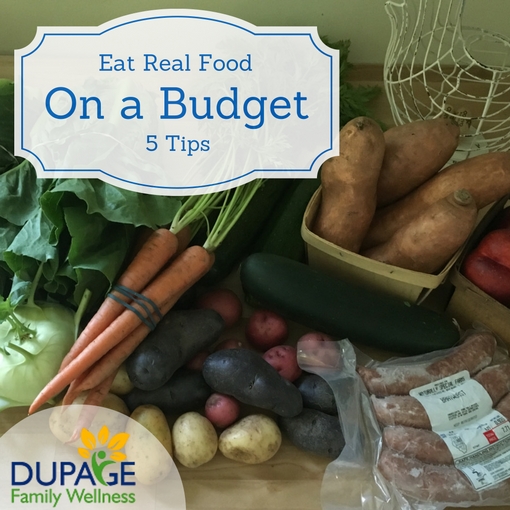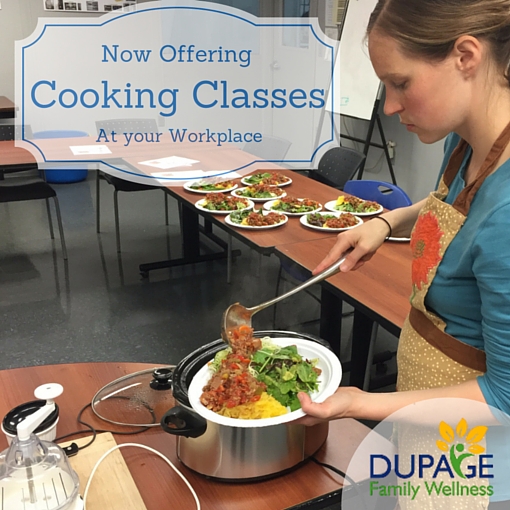 When I was studying nutrition in college, one of my professors always told us “everything in moderation.” I clung to this well known saying and used it to excuse my occasional (but really more like daily) consumption of sweets and treats. I have since come to believe that this is not the best advice.
When I was studying nutrition in college, one of my professors always told us “everything in moderation.” I clung to this well known saying and used it to excuse my occasional (but really more like daily) consumption of sweets and treats. I have since come to believe that this is not the best advice.
What is Moderation?
Moderation: the avoidance of extremes or excesses
The first problem is that it's there are no "rules" to know what moderation means. Who decides what is extreme or excess? There was a recent study to delve into this concept more. Researchers found that not only was everyone's definition of moderation different, but the more people liked a certain food, the more they considered moderate. They almost always set their definition of what was moderate above the amount that they ate- therefore passing off their own behavior as being moderate.
I really like ice cream- so in my mind when I used to have a bowl of ice cream everyday- I was still under the threshold of eating it "in moderation."
You may have problems even if you can avoid excess.
Several years ago, Dr. Jamie told me this analogy, which has resonated with me. Think about this:
When you are born, you have a cup. Each person’s cup is unique, some very small and others, quite large (based on your genes). The cup represents how much junk (stress, toxins, sugar, etc) that your body can handle before showing external signs of break down. For those with smaller cups, you may notice symptoms beginning from a young age ranging in severity from headaches or digestive issues to more serious chronic disease. For those with larger cups, you may be able to go a long time in life before experiencing any negative side effects from your diet and lifestyle choices.
Although this analogy is simplistic, it illustrates why you may not remain healthy if you consume “everything in moderation” forever.
Once your cup overflows, “everything in moderation” is not good advice. At this point, your body is trying desperately to fix itself, while giving you warning signals that something is not right. If you ignore these signals, every little bit causes more damage to your body. When this happens, taking drastic measures for a time will allow your body to heal, remove the warning signs, and restore health.
I often hear people say, “But I’ve done that my whole life” in regards to eating a certain diet or some other lifestyle habit. This leads to the belief that the diet or lifestyle choice could not possibly be tied to whatever negative symptom they are experiencing. Unfortunately or fortunately, your body works hard to keep you healthy. You can abuse it for quite awhile, depending on the size of your cup, before the signs of damage begin to show. The poor choices we make "in moderation” lead to damaging consequences over time.
What advice would I give instead?
My advice would be to listen to your body. If you experience a negative health symptom, your body is trying to send you a message. Do not ignore these symptoms. Rather, dig deep and reach out to figure out the root cause of the symptom you’re experiencing. It just might be caused by the thing that you are "doing in moderation".
What kind of negative health symptoms could be caused by this "overflowing cup?"
The list is long, but here are a few: constipation, diarrhea, bloating, heart burn, joint pain, arthritis, acne, dry skin, allergies, poor blood sugar control, anxiety, depression, headaches, high cholesterol, asthma, fatigue, brain fog, and many more.
Many people have at least one of these symptoms and live with it thinking it is normal. They either think that there is nothing they can do, or that the only solution is to take medication. What most people don't realize is that diet and lifestyle changes could alleviate their symptoms altogether!
This week we have two challenges for you:
1. Think about what you are doing. Notice when you convince yourself that something is OK because it is "in moderation", when you know it's not a good thing. For many people (myself included), avoiding unhealthy foods altogether is easier then just eating a little.
2. Pay attention to your body. Are you ignoring symptoms? Do you assume your aches and pains or digestive symptoms are normal, or just something have to live with?
Do you have any questions or want to discuss this with us? Simply reply to this email, or head over to our facebook page and comment there!
- Joelle Kurczodyna NTP

I have a confession to make. Four years ago, I was a couponer, and we ate the Standard American Diet (SAD) full of processed, convenience foods. I got home from the grocery store, proudly spread my purchases on the table, and made my husband guess how much I paid for everything. I could buy a table full of “food” for just a few dollars. I now understand that this "food" was not really food at all, but chemical fillers with few nutrients. The "food" was cheap, but when I think about the long term effect on our health, it was NOT really cheap.
When we switched to eating a real, whole food diet I was concerned about how much it would cost. As an extreme couponer, I got most processed foods for almost free, but there are few, if any, coupons for fruits, vegetables, or meat. If you are not an extreme couponer, processed, packaged foods are expensive.
When you switch to a real food diet, you will spend more produce and meat, but you will no longer need to buy the processed foods.
For example:
- Buy a bag of carrots rather than a bag of chips
- Buy a dozen eggs rather than a box of pop-tarts
You get more nutrients per dollar when you buy real food compared to processed food containing fillers and few nutrients.
We've been able to eat real food on a tight budget. To break it down, here is the monthly grocery budget for our family of two:
- $100 for meat from a CSA at Walnut Acres Farm. (They are wonderful people. If you sign up, tell them Joelle sent you!)
- $250 for everything else (fruit, veggies, and other staples). I take this money out as cash each month, so I know exactly how much I spend and do not exceed that amount.
For the month of July, I challenged myself to shop local. I shopped only at farmers markets and a small health food store within walking distance. Why? If you go back to reading the post "Should I Buy Organic Produce?". I realized that the absolute best option for our health is to buy locally and sustainably grown food. As an added bonus, this benefits the local community and the environment. It was not that difficult to shop local in July, and I plan to continue this challenge.
Now, back to the budget. With a little creativity, I can stick to my new shop local policy and stay within the budget. You can do this too! Here are a few tips to help you stretch your dollar:
- Buy what is plentiful and in season. Whether you are at the grocery store or a local farmer’s market, you will notice that there is an abundance of the items that are in-season, and the price of these goes down to sell them while they are fresh. These are the bulk of the items that I buy. In July, we ate a zucchini, a variety of greens, cabbage, onions, kohlrabi, broccoli, and cucumbers. Although, I mainly stuck with these less expensive, in-season foods, I supplemented them with a few more expensive items like berries, potatoes and carrots. The beauty of buying in-season is that as the weeks go by and the seasons change, the in-season foods are also constantly changing. Although we’ve been eating zucchini now, I know that that soon there will be an abundance of tomatoes and not long after that winter squash will be in season.
- Use all of what you buy. A great way to stretch your money is to eat the entire edible portion of what you buy, without letting any go to waste. For example, in our recent seasonal spotlight on beets, you will notice that the recipe included both the beets and the beet greens. Add items that you aren’t sure what to do with to a stir fry or soup. If it’s a vegetable try roasting it (see "Making Vegetables the Taste Good").
- Don’t be afraid to try new foods. Prior to this challenge, I shopped at Aldi. While there are a lot of things that I like about Aldi, I was stuck in a rut when it came to buying produce. Along with the idea of point #1, often the things that are cheaper may not be the things that we are used to buying or even think that we like. I’ve been pleasantly surprised when I tried radishes, rutabagas, kohlrabi, and a variety of greens this month.
- Buy in bulk when appropriate. Buying in bulk can save you money if the items freeze well. I specifically noticed this with berries. I could buy a very small container of blueberries for $3-$4 or I could buy the 5 lb box for $15. I opted for the 5 lb box and immediately portioned out what I thought we’d eat for the next few days and put the rest in the freezer. Now we are able to enjoy blueberries all month and a fraction of the price, I am actually snacking on some frozen blueberries and walnuts right now. Keep point #2 in mind and only buy and freeze items that you know you will eat, so the food does not go to waste.
- Get to know your farmer. One of the reasons that we did the shop local challenge was to connect with local people that grow the food that we eat. Once you build that relationship, you might be able to barter services for veggies, purchase the less pretty and therefore less desirable produce at a lower price, or buy leftover produce for less at the end of the day. Even without these advantages, I feel so much better knowing where my food comes from, and I am excited to directly support the people that are growing and raising my food.
I’d love to hear about tips and tricks that you have found to save money on your food bill! Connect with us on facebook.
Joelle Kurczodyna, NTP
@kfamilygoessustainable on Instagram

Recently I was fascinated by a podcast featuring breakthrough work in the area of human genomics to discover the common factors of populations that live the longest.
The term “Blue Zone” has been coined for the five regions that have a significantly greater concentration of centenarians, that is, people that live to be at least one hundred. There are five areas that have been named Blue Zones, which include: Ikaria, Greece; Okinawa, Japan; Ogliastra Region, Sardinia; Loma Linda, CA; and Nicoya Peninsula, Costa Rica.
Scientists have learned that both lifestyle and diet have the ability to turn on and off genes that contribute to longevity and robust health.
Common Lifestyle Factors
-
People move their bodies - a lot. They walk, and garden, and have an active life.
-
Healthy lifestyle is important to the entire community ! They have close social circles that reinforce healthy behaviors.
-
Time to de-stress daily is part of the culture. There are different traditions in each area including siesta (afternoon nap), a happy hour sort of tradition, or a daily time for prayer and meditation.
-
The centenarians are an integral part of their communities, often religious communities. These people were not alone but had neighbors, friends, and family frequently dropping to spending time with them.
-
The centenarians are committed to their families.
Common Nutrition and Diet Factors
- Stop eating when your stomach feels 80% full to avoid weight gain.
- Eat the smallest meal of the day as your last meal in the evening.
- Eat mainly plants and beans. Eat meat rarely and in portions of 3-4 ounces. In the Blue Zones, they only eat meat five times per month, on average.
- Limit alcohol consumption to 1-2 glasses per day.
- Eat mostly locally sourced food, including a lot of herbs.
What are the most common foods in each area?
Since the foods are locally sourced, they differ for each region.
- Ikaria, Greece, the foods known for longevity include: feta cheese, lemons, and herbs like sage and marjoram that they use daily in tea.
- The healthy staples in Okinawa, Japan are bitter melons, tofu, garlic, brown rice, green tea, and shitake mushrooms.
- In Sardinia, Italy they eat goats milk and sheep cheese, sourdough bread and barley, along with fennel, fava beans, chickpeas, tomatoes, almonds, milk thistle tea, and wine from the locally grown Grenache grapes.
- It may be surprising that one of the Blue Zones was actually in the United States. What are they doing right in Loma Linda California? Most members of this community are Seventh-day Adventists, so they avoid smoking, drinking, TV, movies, and other forms of media. Their diet follows biblical principles, thus focusing on whole grains, nuts, and vegetables with a small amount of meat and fish. It also includes avocados, salmon, beans, oatmeal, and eggs. They drink only water.
- In the Nicoya Penninsula of Costa Rica, one of the mottos is "Put an egg on it". In addition, they eat beans, corn, squash, papayas, yams, bananas, and peach palms.
Learning from My Great Grandmother
The photo is my great-grandmother, who lived from 1900 - 1999, almost 100 years with a good quality of life, and without chronic illness. I wish I could talk to her now. From what I can gather, she shared many characteristics of those in the "Blue Zones".
- She was always active, walking, swimming, and riding a "tri-cycle" even into her 90's.
- Along with my great grandfather, they grew a big garden, cooked from it, and shared it with the family.
- She was part of social groups that kept active playing games.
- She was active in her communities, and volunteered frequently.
- Family was important to her. She came to stay with us for a few weeks every summer, and when she was not here she always kept in touch.
Not only is she my longest living relative, she is also a good role model following these lifestyle patterns. In addition, she always had a positive outlook on life and was a joy to be around.
What Can We Take Away from the Blue Zones?
We can learn the following from the Blue Zones:
- There is no one size fits all diet that is best for everyone. Rather, we should eat the real whole foods that are found locally.
- We should listen to the signals of our body.
- We must realize that our lifestyle affects our health and pay particular attention reducing our stress and maintaining our community involvement.
Joelle Kurczodyna, NTP
Joelle and I are excited to announce that we have been working hard to create our own wellness program just for you!! There will be more details posted in the coming weeks, but we wanted to give you a heads up so you can get excited too! 
In this wellness program we will teach you how to eat, how to move, how to reduce stress, how to sleep better, and more! Basically, our goal is to help you become happier and healthier! We are thrilled to share our knowledge and experiences with you!
If you are just as pumped as we are about becoming happier and healthier- email me at This email address is being protected from spambots. You need JavaScript enabled to view it. and let me know. We are looking for a few lucky people to test out the program before the official launch date!
In Health
Dr. Jamie

If you have been paying attention, you know that we at DuPage Family Wellness are passionate about nutrition and helping people to eat REAL FOOD!! I am excited to announce that we are offering a NEW SERVICE to help spread this message to more people in the community!!
Healthy cooking classes for businesses and corporations are now available! These classes are fun and a great fit into a corporate wellness program.
How does it work? We come to your workplace and bring a healthy lunch. While you and your coworkers eat this nutritious and delicious meal, we demonstrate various components of how the lunch was prepared. You will learn WHY we are eating the food we are, and the benefits of incorporating our REAL FOOD principles!
Classes can be as short as 30 minutes over lunch, or longer depending on your workplace needs. Topics and menus can be customized. It can be a single event or a series of classes. Our most recent class consisted of two 30 minute sessions with 12 employees at each.
Don't have a kitchen? Don't worry, we can improvise! As long as there are tables and chairs, we can make it work!
Eating real food not only has health benefits, but it has been shown to improve mood! What company wouldn't want happier and healthier employees! If your company is looking for a new fun activity for it's employees, let us know!
Halloween is just around the corner, and this year, I was excited to hear about a new trend – the Teal Pumpkin Project . As food allergies are becoming rampant, affecting 1 in every 13 kids, many are unable to enjoy the typical candy offerings that most of their peers enjoy on Halloween.
. As food allergies are becoming rampant, affecting 1 in every 13 kids, many are unable to enjoy the typical candy offerings that most of their peers enjoy on Halloween.
The idea of the Teal Pumpkin Project is to place a teal pumpkin outside of your house letting trick or treater’s know that in addition to candy, your home also offers non-food options. Some food alternatives include glow sticks, stickers, coins, pencils, etc. You can read more about the Teal Pumpkin Project here.
As a nutritional therapy practitioner and soon to be parent, this is one tradition that has been a struggle for me over the last couple of years as we are clearly seeing the negative effects that sugar is leaving. See our posts on these negative impacts of sugar in PART 1 and PART 2 of the Not So Sweet Sugar Reality. I love the idea of giving the option for something other than a sugary treat.
As another alternative, friends of ours have introduced the “sugar fairy” or “sugar witch” at their house. After trick or treating is over, the candy is put in a designated location and for the sugar fairy. She uses sugar to keep warm during the winter and in exchange for the candy she leaves a special gift!
Whatever your family decides to do, have a fun and safe Halloween!
Author: Joelle Kurczodyna, NTP
 When I was studying nutrition in college, one of my professors always told us “everything in moderation.” I clung to this well known saying and used it to excuse my occasional (but really more like daily) consumption of sweets and treats. I have since come to believe that this is not the best advice.
When I was studying nutrition in college, one of my professors always told us “everything in moderation.” I clung to this well known saying and used it to excuse my occasional (but really more like daily) consumption of sweets and treats. I have since come to believe that this is not the best advice.





 . As food allergies are becoming rampant, affecting 1 in every 13 kids, many are unable to enjoy the typical candy offerings that most of their peers enjoy on Halloween.
. As food allergies are becoming rampant, affecting 1 in every 13 kids, many are unable to enjoy the typical candy offerings that most of their peers enjoy on Halloween.